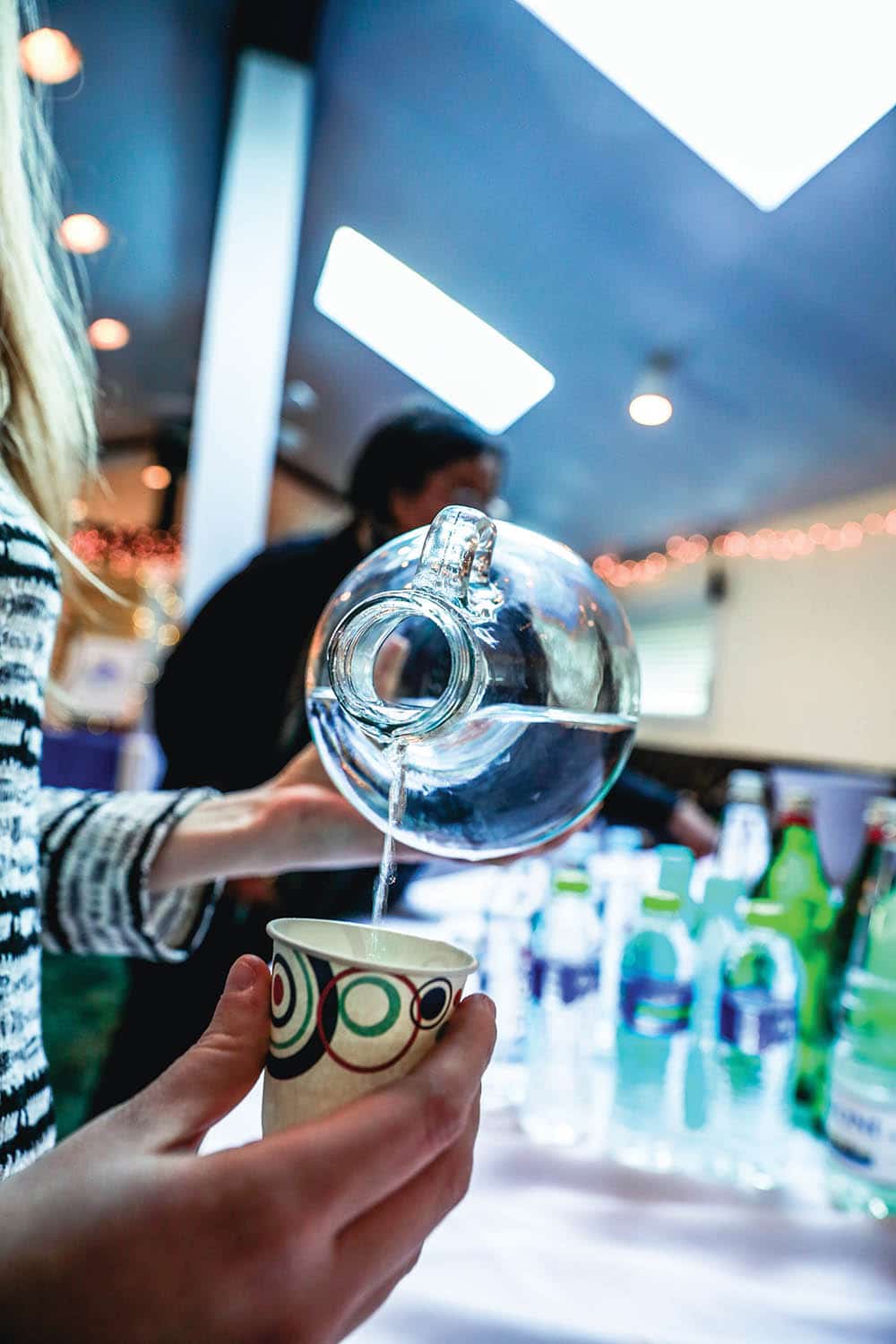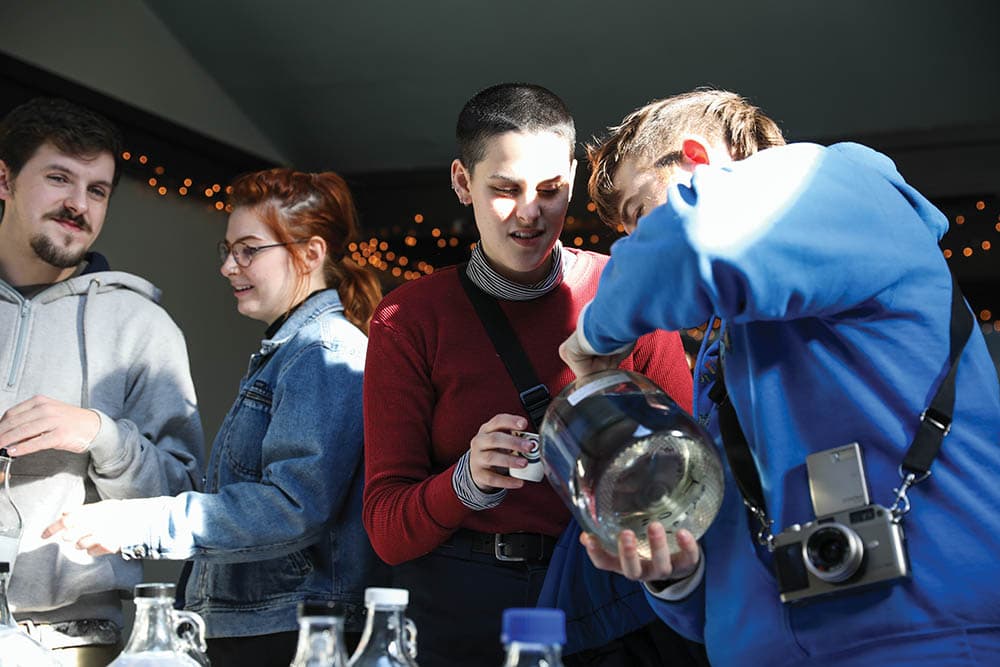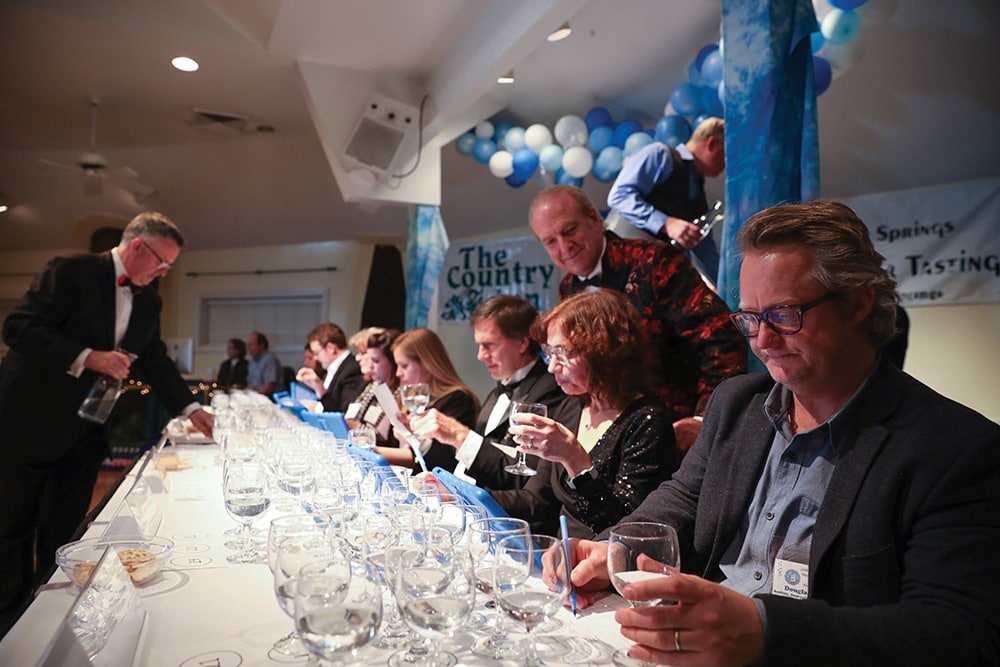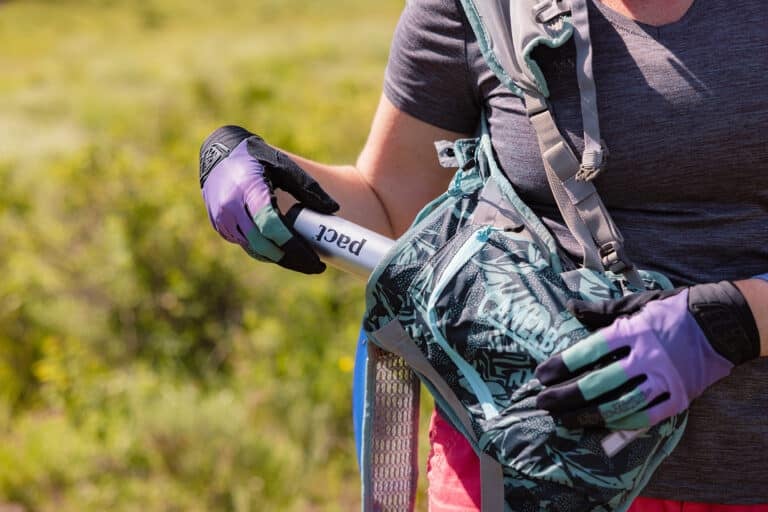Lessons Learned from the 30th International Water Tasting
All photos by Shannon McGowan
Water is an essential resource that’s often taken for granted. Turn on the kitchen faucet, you have water to drink. Turn on the shower head, you have water to bathe. Turn on the washing machine, you have water to clean your clothes.
But when something goes wrong, you start to pay attention to where that water is coming from and who controls it. At the time 10,000 gallons of chemicals leaked from the storage container at Freedom Industries into the Elk River on January 9, 2014, Cathy Kunkel was working in Charleston, W.Va. She remembers she had just sat down for dinner with a friend, when the do not drink notice came in.
Although the spill happened earlier that morning, West Virginia American Water, a private water utility company, did not notify its customers that their water was contaminated until that evening. The Elk River supplies water to more than 300,000 residents in West Virginia, or about 16 percent of the state’s population.
“They could have decided to close off the intake for some amount of time, let the plum of pollution pass by, and then try to reopen it,” Kunkel said. “They made the decision to keep the intake open and hope their filters could handle it. And then the filters couldn’t.”
This is what I think about as I sit down at the 30th International Water Tasting in Berkeley Springs, W.Va., this past February. When I first agreed to be a judge for the largest water tasting competition in the world, I thought this would be a fun and unique event to look back on, even if I didn’t fully understand what to do. After all, how do you rank the best-tasting water, a drink that doesn’t always have a discernible taste?
And memorable it certainly was. I learned how to judge water by appearance, smell, mouthfeel, and taste, something I didn’t think was possible until I sampled more than 60 waters from across the country and the world. By the end I was so overly hydrated that over the course of the tasting, I had gone to the bathroom eight times in eight hours.
But as I sat at the Country Inn of Berkeley Springs in a quaint rural spa town and drank from each glass, tasting waters in the municipal, purified, non-carbonated, and sparkling categories, I couldn’t help but think about what a privilege it is to have access to clean drinking water. I thought about the people of Flint, Michigan, and the crisis that began in 2014 when dangerous levels of lead were found in the city’s water supply, and the sad fact that six years later, residents are still feeling the effects, as not all of the lead pipes have been replaced and distrust of officials is still high.

I also thought about my hometown of Wilmington, N.C., where many residents, including much of my family, get their water from the Cape Fear River. A Chemours plant polluted the river for years with GenX, one of over 4,800 PFAS chemicals used in a variety of products and services that doesn’t break down under normal environmental processes.
It was sobering to sip some of the best water in the world, while reflecting on the reality that many places still exist where clean water is not a given. And I learned from others in attendance what needs to be done to protect safe access to the precious natural resource.
At the event, presenter Scott Shipe, founder of Water Advocacy, urged citizens to pay attention to where their water is coming from. Water utilities face a number of problems, including weak source protection plans, lack of financing for infrastructure improvements, groundwater overuse, and long-term water supply availability.
“The lead issue still has not been addressed,” Shipe said. “And here we are now dealing with PFAS on top of lead. There are a lot of issues. They [water utilities] have to face reality, be transparent, and tell the American public what’s going on. That’s the biggest thing that needs to be done, the leadership. People don’t want to step up anymore because of the political suicide. Because water is a big deal.”
This means citizens need to be extra vigilant about what is in their water, asking questions of their local leaders and water authorities. “What are the levels?” Shipe said. “How often are you sampling? How are we going to pay for all these projects? How clean do you want the water? You should be disclosing that kind of intelligence.”
The two chemicals that leaked into the Elk River in 2014, MCHM and PPH, are used to process coal. The treatment plant lacked the proper testing equipment because the parent company, American Water, had it removed in 2004, saying it was too expensive to maintain. While workers that winter day couldn’t determine the exact concentration levels of the chemical, they could smell the licorice odor coming from the water signaling something wasn’t right.
With limited water stored in the tanks, the whole system would have gone dry in a few hours if they shut off the intake. Customers would then have to wait for the system to re-pressurize before getting back up and running. But with water still running through the system, some residents were using water they didn’t know was contaminated. Once the water supply was shut off, some residents and businesses went more than a week without running water.
In the wake of the leak, residents began digging into the truth about their water supply as the water company continued to bill them for the contaminated water. “After we were meeting and talking about the billing issues, we started to ask a lot more questions about the water utility’s preparedness,” said Kunkel, who was also a presenter at the tasting competition and spent time at the event raising awareness for how her community was affected after the leak. “Why hadn’t they shut off the intake? Why did they not know what was stored a half mile upstream?”
As they were asking these questions, a group of local citizens, including Kunkel, eventually formed Advocates for a Safe Water System to get more answers on what went wrong that day. “People’s lives were totally turned upside down,” Kunkel said. “People were going to visit relatives outside of the area to do their laundry. People were going to stay in hotels outside of the area so they could take showers to go to work the next day. The National Guard was setting up these big tankers full of water around the area where people would stand in line for hours to get water. It was really disruptive.”
The group successfully lobbied the Public Service Commission to look into Freedom Industries and West Virginia American Water, an investigation that would drag on for three years. They also advocated for stricter government oversight on source water protection plans and regulating above ground storage tanks.
In the immediate aftermath of the leak, the West Virginia Legislature passed strong environmental legislation regulating water utilities and potential pollutants.
“The source water protection plan requires the water utility to inventory what kind of facilities are located upstream and what could potentially contaminate the water system,” Kunkel said. “That has remained pretty much intact. But the other part of the legislation was regulating above ground storage tanks like the one that had spilled, regulating what could be stored within a certain distance of water system intakes. That’s what has been continually rolled back pretty much every legislative session since then, mainly because the oil and gas industry has a lot of above ground storage tanks.”

Kunkel and others in her community are continuing to push for stricter water safety regulations and improved infrastructure to protect municipal supplies, because, as evidenced in Charleston, Flint, Wilmington, and many other places, when disaster strikes it’s the citizens who rely on the water coming out of their faucets who suffer.
“We’re seeing a lot of crumbling smaller water systems, especially in rural areas that just don’t have the money to reinvest in treatment capabilities or replacing old pipes,” Kunkel said. “They can’t do that without massively raising rates to unaffordable levels. We need a renewed federal commitment to federal investment in safe drinking water infrastructure and wastewater infrastructure.”
Contact your local water authority to find out what is being done to protect your water source. You can also visit the Environmental Working Group’s website for a variety of water related topics. Use your zip code in their Tap Water Database for more specifics about contaminants found in your water source.








